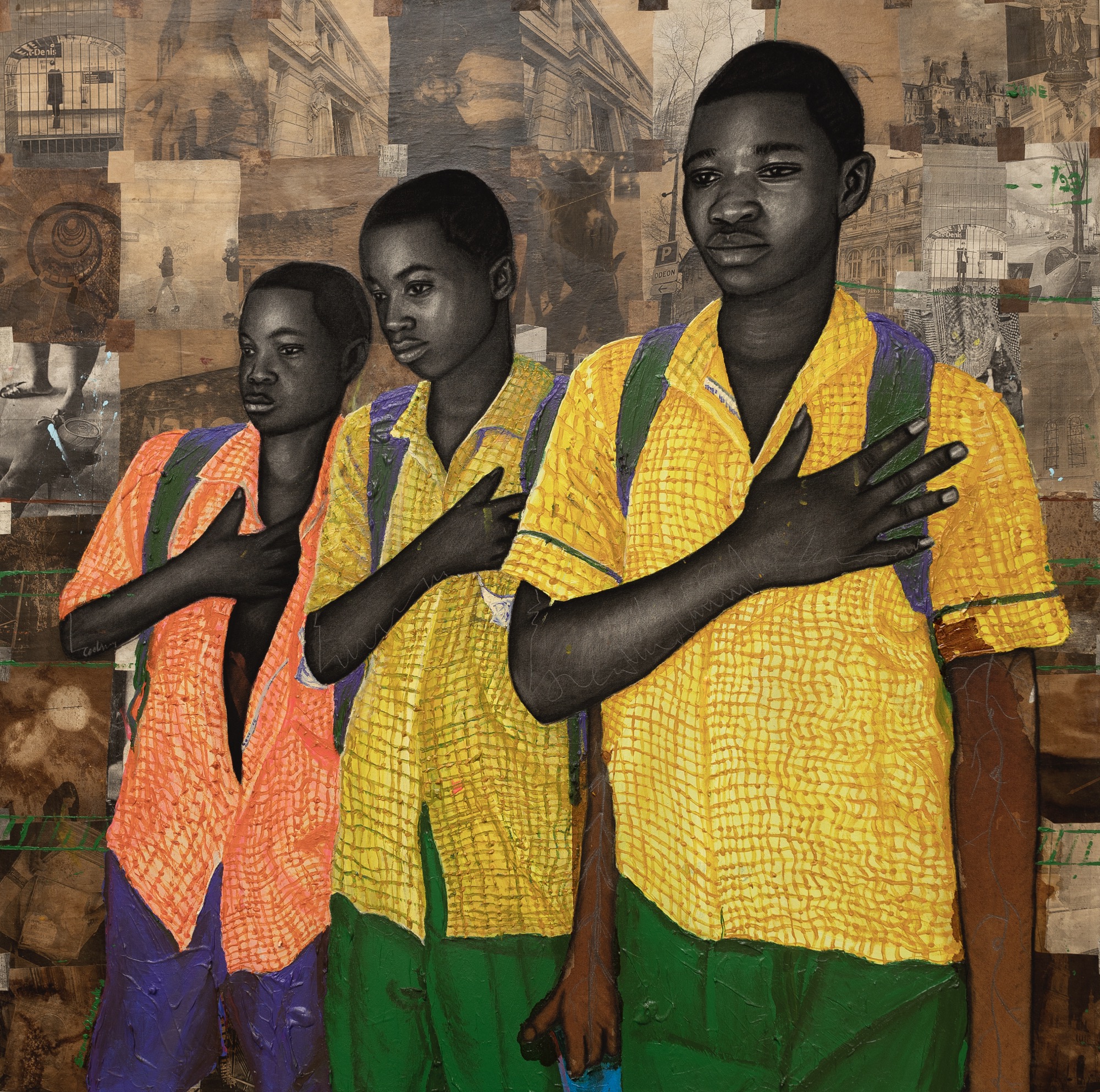This post was originally published on Colossal
Growing up in Lagos, Emma Odumade always drew cartoons and created collages on paper. As he continued to make work, his interest grew in highlighting the world around him, especially young people in his community.
Odumade’s vibrant portraits and self-portraits, the latter of which he makes toward the end of every year, reflect a sense of unity, a search for self, love, and anticipation of the future. These particular works arose as “an attempt to have a diary—I never had one,” he says. “I needed to rediscover myself; see myself from an angle—from a third eye. My art became a mirror, through which I was a reflection.”

Portraits serve as records of activities and experiences, documenting the artist’s observations and referencing history and culture to tell personal stories. He combines images with other mediums like charcoal, acrylic, ink, and repurposed earlier sketches, invoking what he calls “stamps of moments”—a collection of memories viewed through the spectrum of past, present, and future.
“I love that I can reference historical events, stolen African artifacts, and my humble beginnings through a photo,” Odumade tells Colossal. He collages the backgrounds of many compositions with numerous black-and-white images dyed with tea to give an antique appearance. “The vintage brown look of the old photos is to remind viewers about [the] past and to give a ‘test of time’ feeling.”
Five new works will be presented by Unit London at 1-54 Contemporary African Art Fair in London, which runs from October 10 to 13. Explore more of Odumade’s practice on Instagram.





Do stories and artists like this matter to you? Become a Colossal Member today and support independent arts publishing for as little as $7 per month. The article Collaged Portraits by Emma Odumade Draw on the Past to Face the Future appeared first on Colossal.




0 Comments